"Assuming it's about a 'boy and girl.'"- thoughts on Gengoroh Tagame's Our Colors
Tagame shows us the pressure of the secrets and the truths. This book is shaped around empathy, something that Sora doesn’t think he will find...
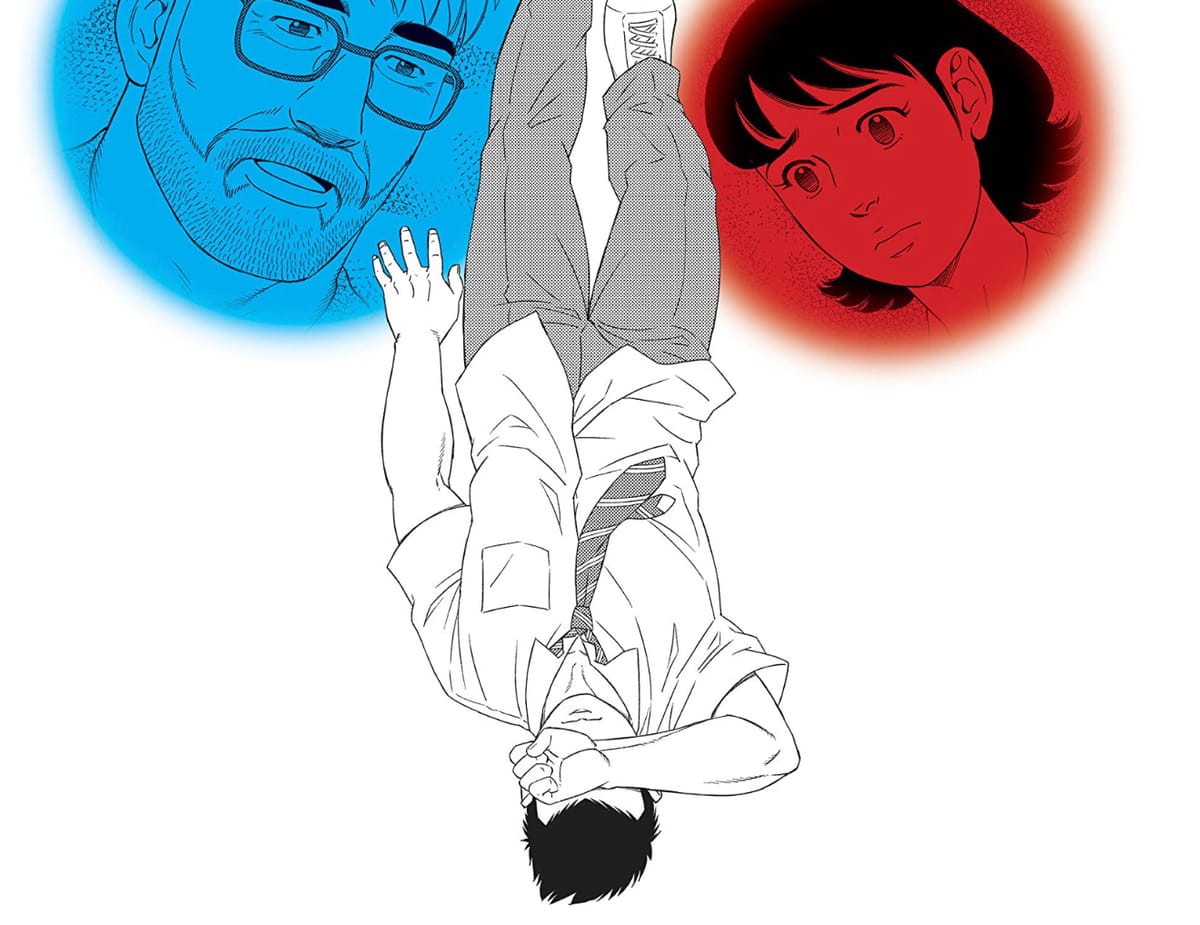
There’s nothing “normal” about Our Colors, Gengoroh Tagame’s coming-of-age story about Sora Itoda, a closeted gay Japanese teenager who struggles to reconcile who he is with who everyone else thinks he is. The kids at school and even his parents think his childhood friend Nao is his girlfriend; even she starts to wonder if there’s something between them that’s more than just a close friendship. His friends at school, including Sora’s crush Yoshioka, think he’s just another one of the guys, laughing that one of the other boy’s sisters has a collection of gay romance and erotic manga. “Homos” they laugh. “Disgusting.” “Sick,” they judge the idea of homosexuality as much as, if not more than, they do the girl’s collection. And they expect Sora to join them in their mocking of it. Even his parents expect him to be the good son who will meet a nice girl and give them grandchildren someday. Sora puts up masks when he needs to, to protect himself and his secret. He doesn’t play along to get along with anyone- he doesn’t laugh at the jokes or join in on the banter- but he can’t be honest with them about who he is. It’s a lot for a teenage boy to have to deal with when there’s no one to support him or help guide him. Everyone around Sora is heterosexual, assuming he has to be too.
He doesn’t do anything to make anyone think he’s anything other than their idea of normal. He doesn’t go along with his friends’ jokes or his parents' expectations but doesn’t share himself with them. He smiles and that’s all that they or anyone get of him. Tagame, himself a gay manga creator, approaches Sora with a protective touch, showing the young man at a crucial time in his life learning how to be comfortable in his skin or even just aware that he can be. The pressure of maintaining his secret weighs him down at the beginning of the book. Sora holds everyone at a distance, using that manufactured gulf as a buffer for his feelings. Even Nao, his closest friend growing up, sees the distance that has grown between them as Sora makes her call him the more formal “Itoda”. But Sora thinks he knows who he is and he’s scared of others finding out because he doesn’t know how people will react. Will they reject him? Or will their reaction be worse than that? Why should he let them in when all he expects is pain and rejection?
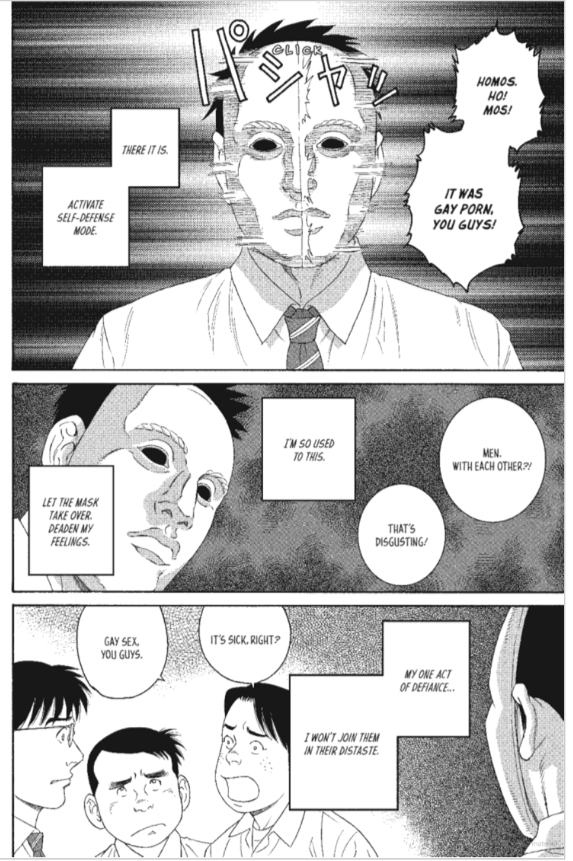
Our Colors is almost the inverse of Tagame’s earlier book My Brother’s Husband. In that book, a straight Japanese man has to figure out what it meant that his late brother was gay when that brother’s Canadian husband unexpectantly shows up in Japan, wanting to get to know his extended family. A large portion of the emotional weight was on the surviving brother attempting to understand who his brother was and who his brother-in-law is. In Tagame’s work (well, his non-gay exotic work at least,) he wrestles with all of these swirling emotions that we all experience in the face of the truth, making us confront these issues along with these characters. In My Brother’s Husband and Our Colors, Tagame shows us the pressure of the secrets and the truths. These books are shaped around empathy, something that is essential for Tagame and something that Sora doesn’t think he will find once people start finding out about him.
Sora needs someone to be himself with, someone who will accept this young man as who he is. But in this repressed world, it’s a lot for a young man to come out as gay. His parents seem nothing other than loving and wanting the best for their son. Same with Nao and her friend but they also have no idea what’s going on with Sora. Throughout Our Colors, it’s not that the people around Sora are against the idea of him being gay; they just don’t know any better. Yes, there are the friends at school who laugh over gay manga, including Sora’s crush, but they don’t know what they’re doing to Sora because he hasn’t let them. That’s not to let them off for their hurtful language but it does illustrate Sora’s need to find a way to express his honest self.
Sora encounters empathy for the first time in a stranger, a man who appears out of nowhere during a particularly low point for Sora. The old man stands over Sora, confessing “I’ve always wanted to tell you that I love you,” before disappearing without a trace.” Convinced that it was just a dream, it was still the first time Sora heard a man say “I love you.” It’s a massive moment for Sora that completely disrupts his world, including the masks that he’s built around himself for protection. It’s almost even more confusing for Sora because he’s developed these different defensive postures to shield himself that those seemingly simple words completely shatter.
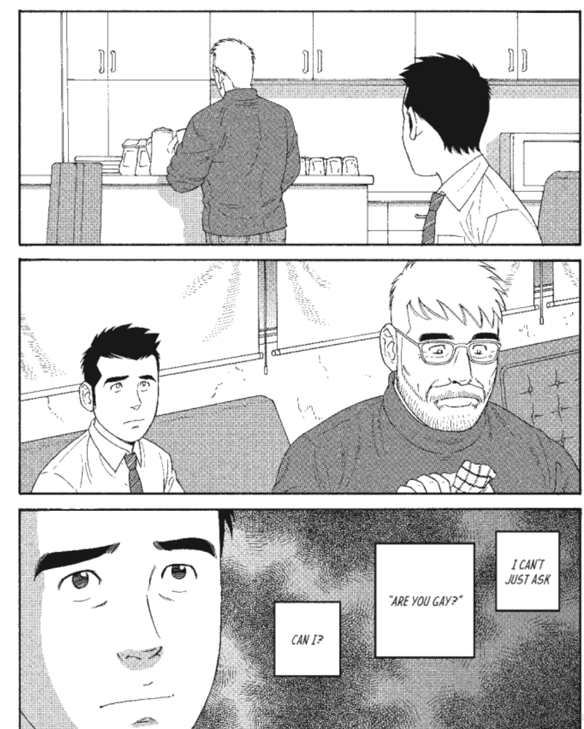
That man, My Amamiya, eventually crosses paths with Sora again after Sora spots him, following him to a small, hidden cafe that Amamiya owns. That cafe becomes a refuge for Sora where he views Amamiya as a role model. And when Nao learns and accepts Sora’s queerness, the cafe becomes where Sora can himself without his defensive masks. An older gay man, Amamiya seems to have it all figured out. Here is a gay man who’s not hiding who he is. At least that’s how it appears to a teenager who only sees today and can’t even imagine that Amamiya may have a past that’s more similar to Sora’s than Sora realizes. Tagame finds ways not to make anything easy for the characters as Nao learns about her friend’s sexual orientation or when Amamiya’s past catches up to him. For Sora, there are all of these external forces that push at him, forcing him to step outside of his comfort zone until he can be comfortable with who he is and start living his life in a healthy & honest way.
For all of the complex emotions and situations that Tagame explores, he expresses them through simple and expressive drawings. His pages are full of big, bold drawings of these people and their lives. The artwork opens up the story as the acting of these characters lets us into their hopes and fears. Tagame lays out the drama in the artwork on every page. The artwork expresses the need for and the results of empathy in Sora’s life. When we talk about the masks that Sora puts up to face his peers, Tagame steps outside of reality and draws Sora’s inner vision of himself, with an expressionless mask facing outward to his friends and family, not letting anything in but more importantly not revealing anything of Sora out to the world. And when he’s not in a defensive mode, his uncertainty and confusion are shown on his face. He may be hiding from the people around him but Tagame doesn’t let Sora hide from the reader.
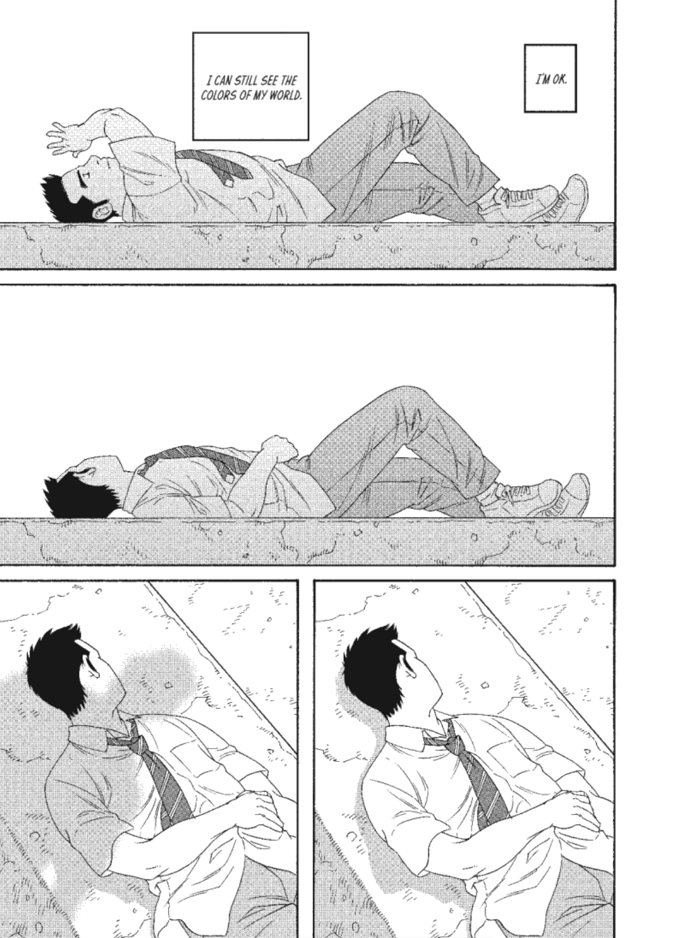
An artist, Sora interprets his view of the world in terms of color. Sora’s observations of the colors around him express his connection to his own emotions. He may be repressed but he’s not blind to what he’s going through. Sora’s view of the world reveals his connection and perceptions of his environment that he’s not comfortable sharing with the people in his life. It’s part of his discomfort with who he is that Amamiya and Nao help him adjust to. He’s never ashamed of being gay; he doesn’t apologize for who he is. It’s just that he sees a normality around him that doesn’t reflect who he is.
Once Sora’s mask begins to fall away and the people in his life learn who he truly is, the boy begins to take the steps needed to accept himself and he finds acceptance from others. Mr. Amamyia and his story show Sora that it’s never easy to be a gay man, whether you’re a teenager or even older than that. While Mr. Amamiya seems to have it all figured out now (hint: even he doesn’t,) his past shows Sora the cost of holding back on telling anyone even longer than he already has. So Nao is the first and while it takes her a bit to adjust, her and Sora’s friendship grows even stronger. As his best friend accepts who he is, that gives him the strength to say “I’m gay” to even more people. He doesn’t get to be open with everyone; his secret crush remains secret even at the end, but by the end of the book, Tagame shows a young man who is ready to be honest with himself and with the world.
This brings us back to the idea of what is normal anyway. All Sora wants to ask the person he’s interested in out on a date or something. And it’s normal to be scared of that, to be scared of what the person might say or do. But when you say a boy wants to ask another boy out on a date, is that normal? Shouldn’t it be? In Sora and Mr. Amamiya, Tagame unveils how the pressure of not being what some would judge as “normal” weigh on these characters’ souls and how it beats at them. That pressure ends up being both external and internal as these men have been raised to think one way, the “normal” way, but discover that they’re something else, still normal but ultimately just different. That’s where Tagame is searching and finding his empathy as Sora and Amamiya learn that they are normal. It’s not them who have to adjust to the world; it’s the world that has to accept them just as it accepts everyone else.
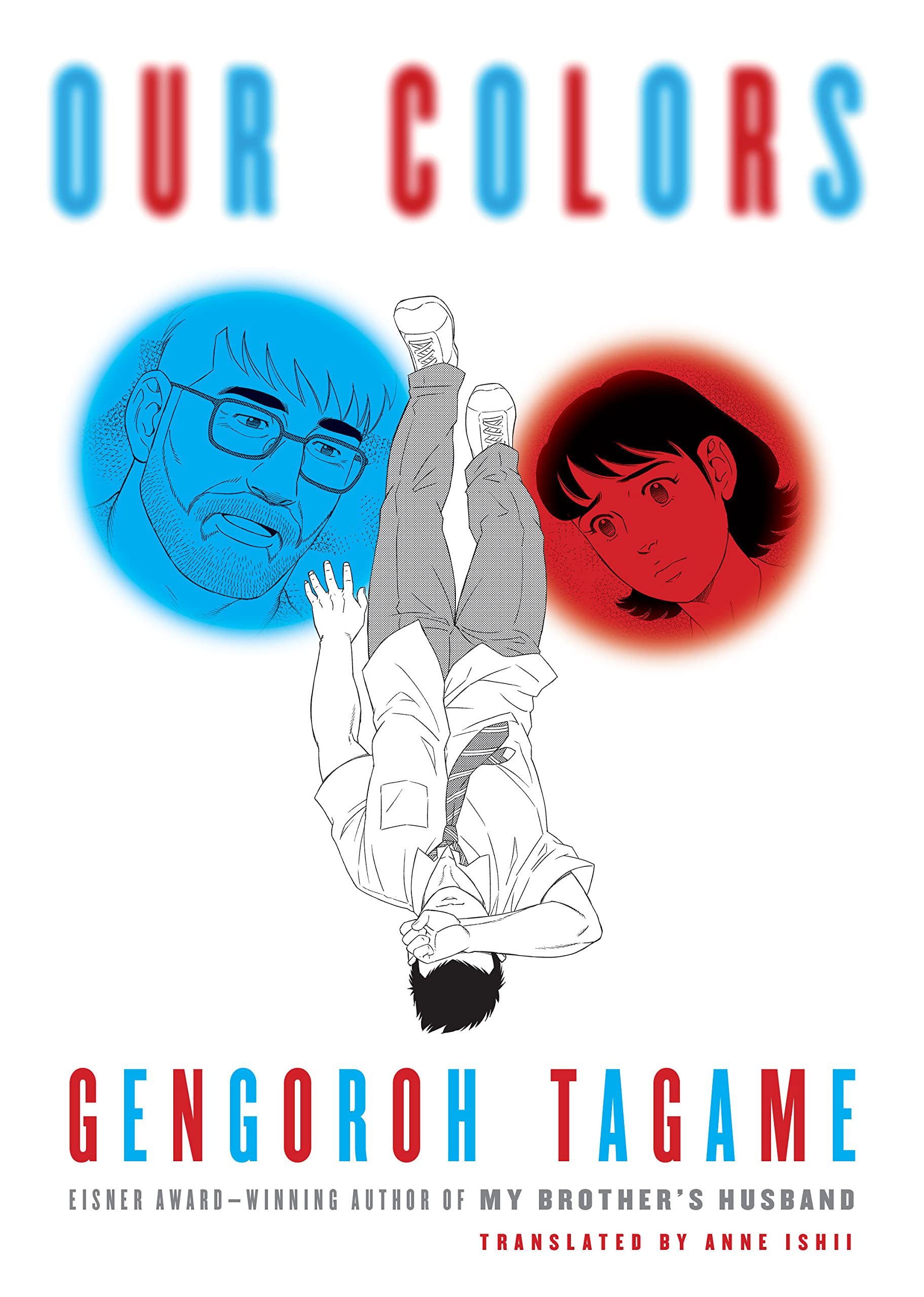


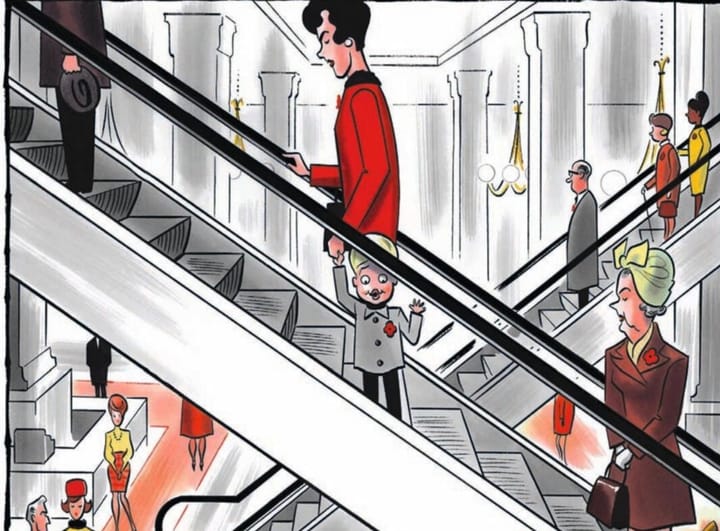
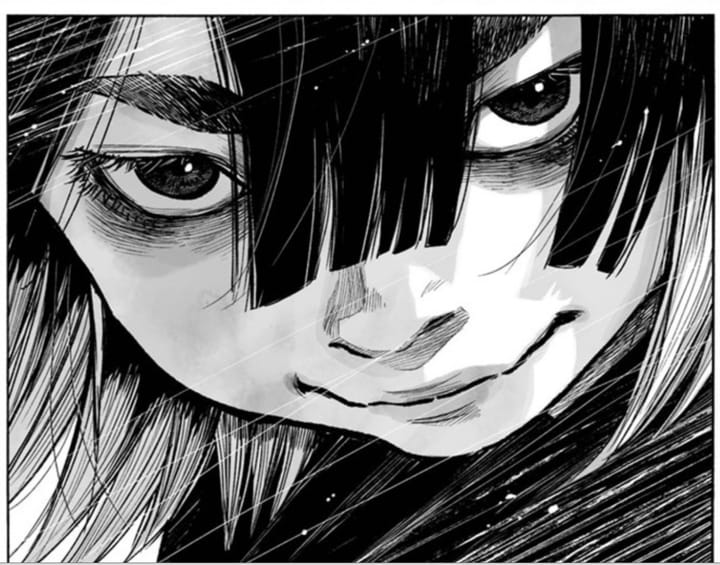
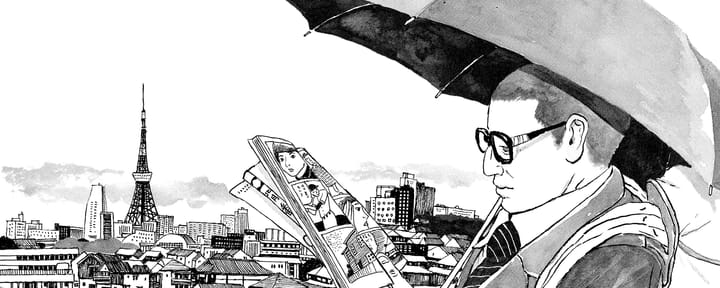
Comments ()